Snow mode is an excellent feature on newer vehicles that makes driving easier through slick conditions. If you have this option available, you might wonder if it will impact your fuel economy. We researched the technology behind it, so you'll know whether or not your gas mileage will be affected.
Enabling snow mode in your vehicle will make it easier to navigate through the snow and result in less fuel being burned to power your car.
Now that we know that snow mode will save a bit on gas, we'll consider why this feature will consume less fuel. You might also be curious about what mode saves the most gas or what the best speed is to save on fuel. For the answers to these questions and more, read ahead in this post to see what our research has uncovered.
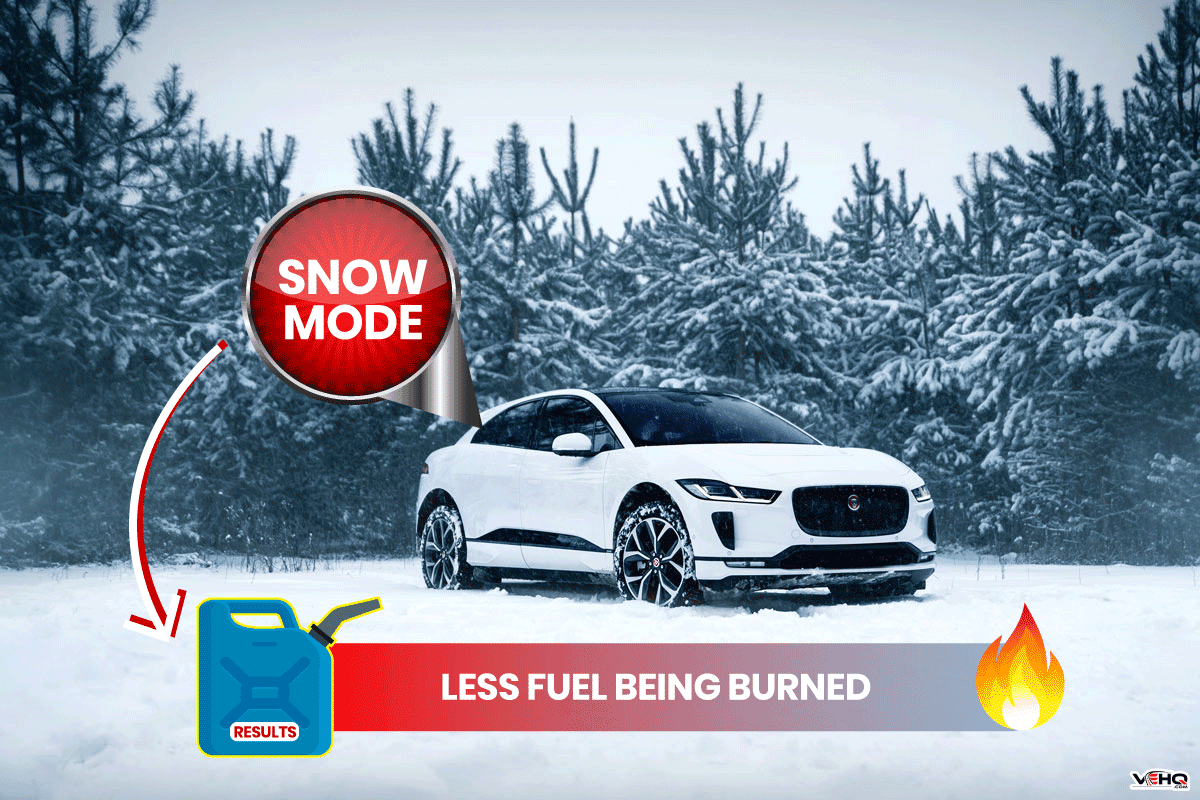
Why putting your vehicle in snow mode will save you a bit of gas
The tires on your car are powered by the internal combustion engine under its hood. The more the tires are told to spin, the more fuel the engine will burn. But how does this get impacted by the snow?
You've probably been in a situation where your tires have spun hopelessly on a patch or drift of snow. The vehicle might not be moving, but the tires are working overtime. The energy expelled by the tires is all for naught, plus it's burning fuel in the meantime.
Engaging in snow mode will severely limit how much the tires will spin. This mode will detect spinning, shift power away from that wheel, and place it on the others. This reduction in the "stuck" tire's torque will not only keep the vehicle moving but also save a bit on fuel economy.
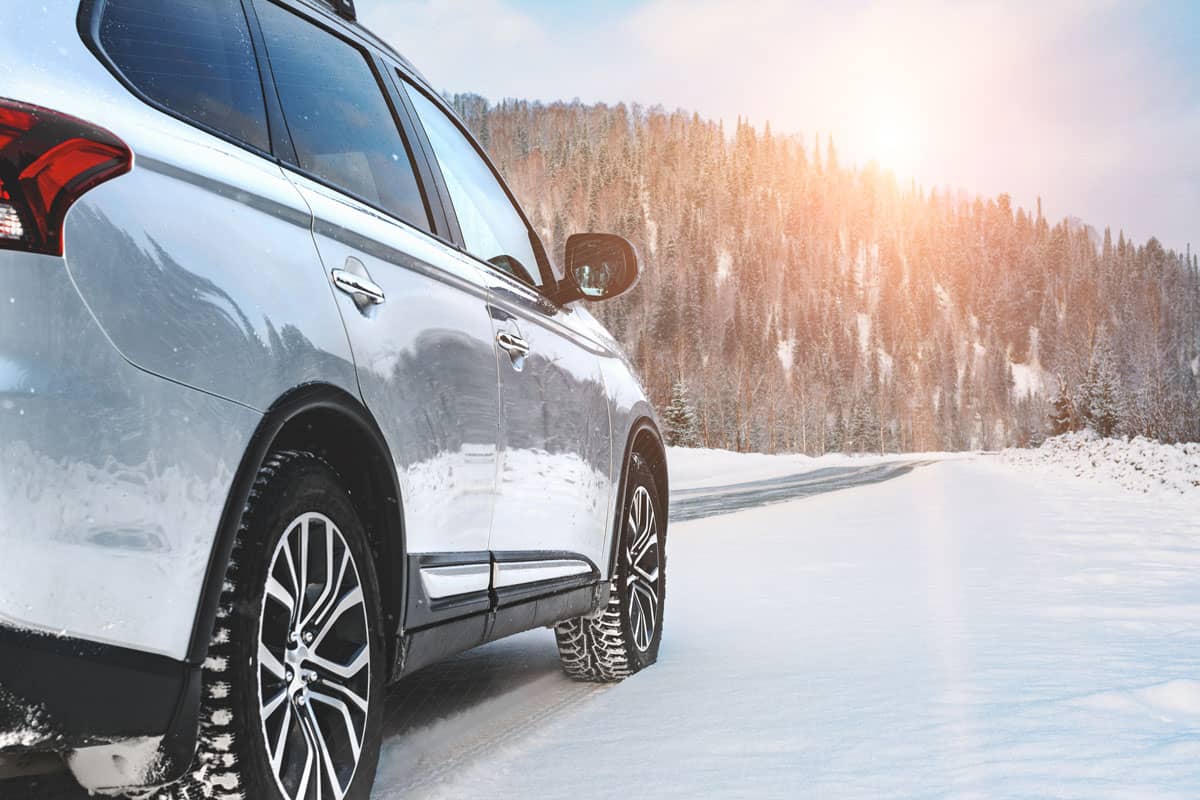
What driving mode will save the most fuel?
Modern vehicles will usually be equipped with multiple driving modes. These might seem a bit confusing to a person who has never had these options. And it stands to reason that one mode will lead to better fuel efficiency than the others.
If your vehicle is built with Eco mode, you can use it to save the most fuel. This mode will reduce the power from the engine to do so. Once this mode has been enabled, you will find that the accelerator is less responsive. This makes it more challenging to drive aggressively.
This mode is meant to have you drive at a more relaxed pace. It will not limit the speed of your vehicle but does slow down its ability to accelerate overall, saving fuel along the way.
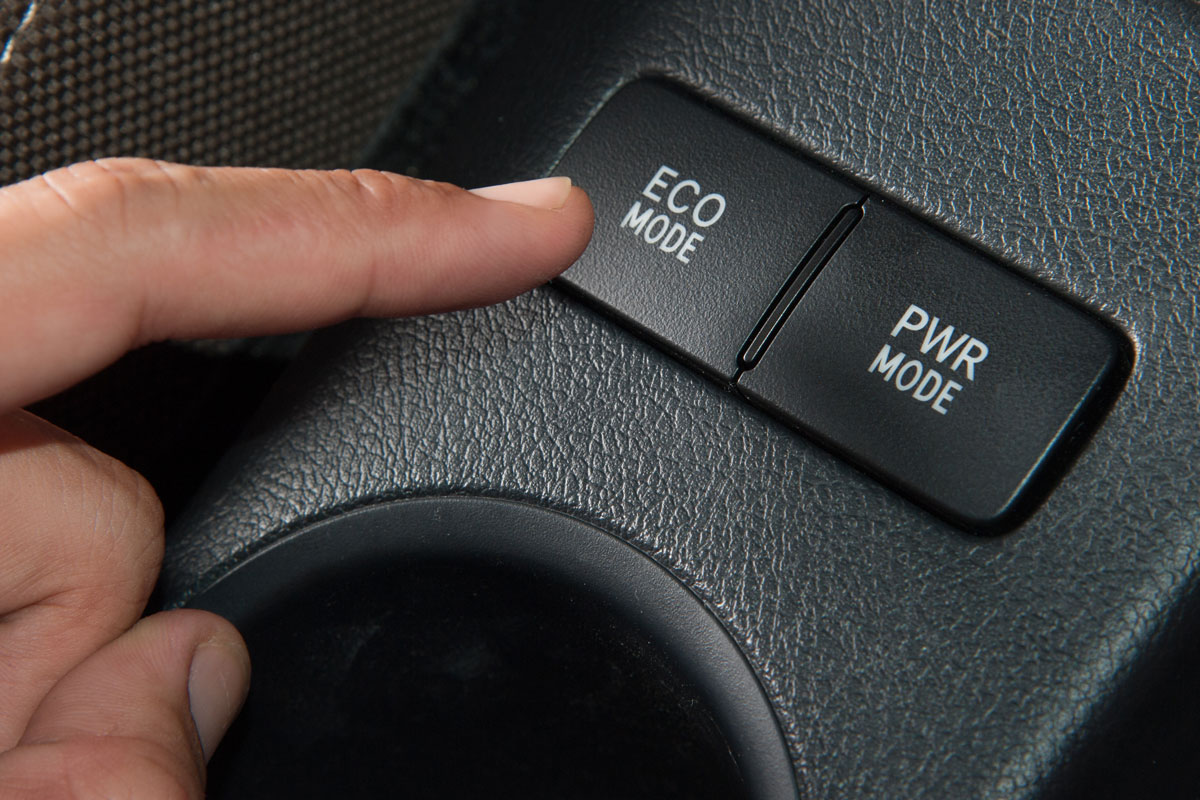
What speed should I drive to save the most fuel?
You're probably aware that a vehicle will get noticeably better fuel economy when it's on the highway. The constant braking and accelerating in town make the engine work harder and burn more fuel.
Once on the highway, the speed is ideally set, reducing the fuel required to keep it going at a certain speed.
But the more an engine works, the more fuel it will burn. And the faster you drive, the more output the engine needs to maintain that speed. In fact, driving at high rates of speed can burn as much as 14% more fuel.
Experts maintain that any speed over 50 miles per hour will begin to reduce fuel economy. But driving that rate on the interstate might not be the best idea.
Ideally, keeping your vehicle close to 65 miles an hour will provide great fuel economy as well as a safe speed to travel the interstate highways.
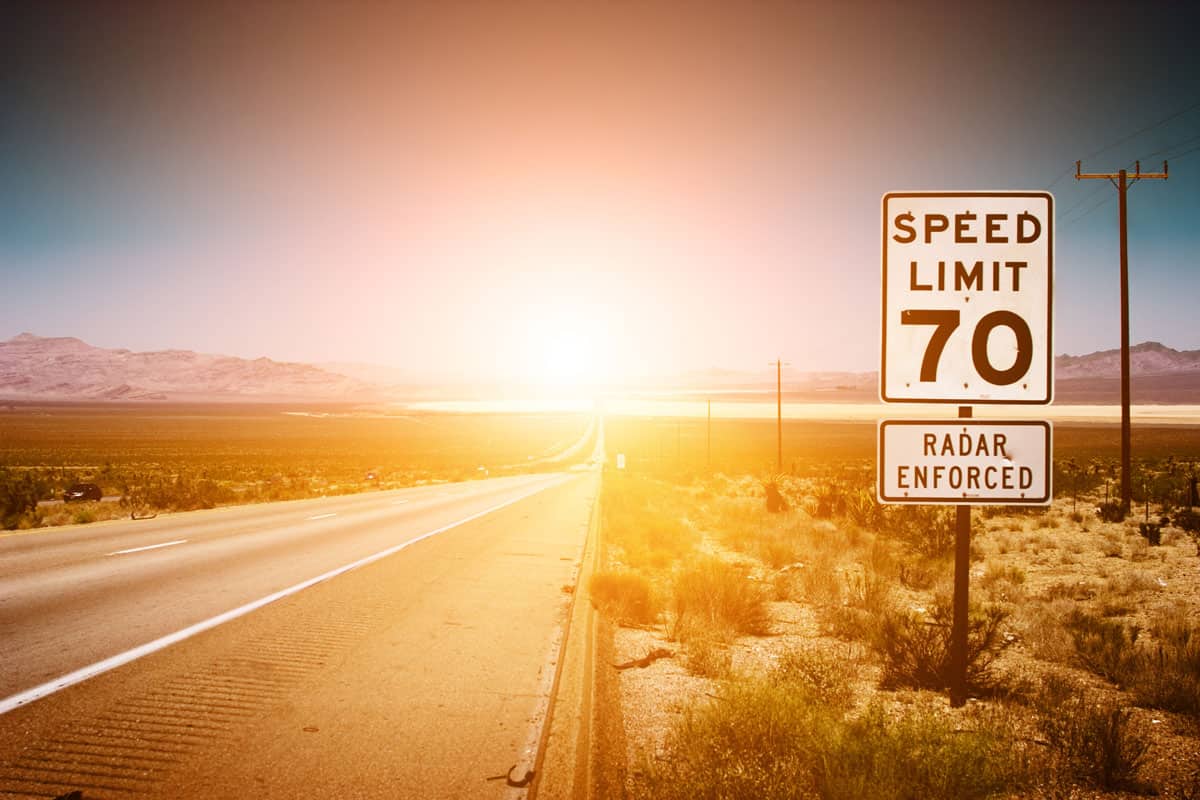
How can I maximize my gas mileage?
As much as fuel prices fluctuate, it's no wonder that many consumers are looking for real ways to increase their fuel economy. Some vehicles are equipped with certain modes, like snow or Eco, that will save gas under certain circumstances. But saving on gas doesn't have to be condition-based.
You'll find that by changing a couple of your driving habits, you can add several miles per gallon to your driving. If you're behind the wheel a lot, these changes can add up over time. And we promise that they are pretty simple to do.
Keep your tires inflated.
Some folks might not realize it, but the one major thing you can do to safeguard your vehicle's fuel economy is to keep those tires inflated.
As they are the only part of your vehicle to touch the roadway, they need to be full so that they can whiz along without any slag. A decrease in their PSI means that they will be sluggish, which means more fuel must be spent to propel them.
A tire that isn't inflated correctly makes the engine work harder to move the vehicle. The harder the engine works, the more fuel it will burn.
Tires will last a lot longer if you keep them aired up. Routinely check their pressure to ensure that they continue to work their best.
Be mindful of how you accelerate.
Mashing down on the throttle might get you past a car in a hurry, but it also burns unnecessary fuel. This type of driving, also known as aggressive driving, is a giant fuel waster. Whether in town or on the interstate, your fuel economy will decrease if this is your driving norm.
Be mindful of how you drive. This will save you money at the gas pump and keep you and your passengers a little safer.
The faster you drive, the more fuel you will burn.
Earlier in this post, we mentioned that the best speed to drive to save on fuel is between 55 and 65 miles per hour. Driving at these speeds is not always practical [or safe]. But know that the faster you drive above them, the more fuel you will burn per gallon.
The United States Department of Energy informs us that aggressive driving and speeding on the highways will burn between 15 and 30% more fuel. This is something you might want to keep in mind before setting your cruise control to a level above the speed limit.
Keep your loads light and the in-town trips to a minimum
The more weight your vehicle has to carry, the harder the engine will have to work. A full load of goods in the bed of a pickup truck or having a rear end in every seat of your SUV will strain your vehicle's working parts, which comes at the cost of your fuel economy.
When possible, carry as little weight on board as you can. Don't leave heavy items in your vehicle for longer than you need them. A few hundred extra pounds can show its impact on road trips, so be mindful of what you need to carry and what can be left behind.
You will get the best mileage on the highways. The less stop-and-go driving you do, the better it is for the vehicle's fuel economy. Consider walking or biking instead of starting your engine if it's a short distance.
Avoid putting things on the roof of your car.
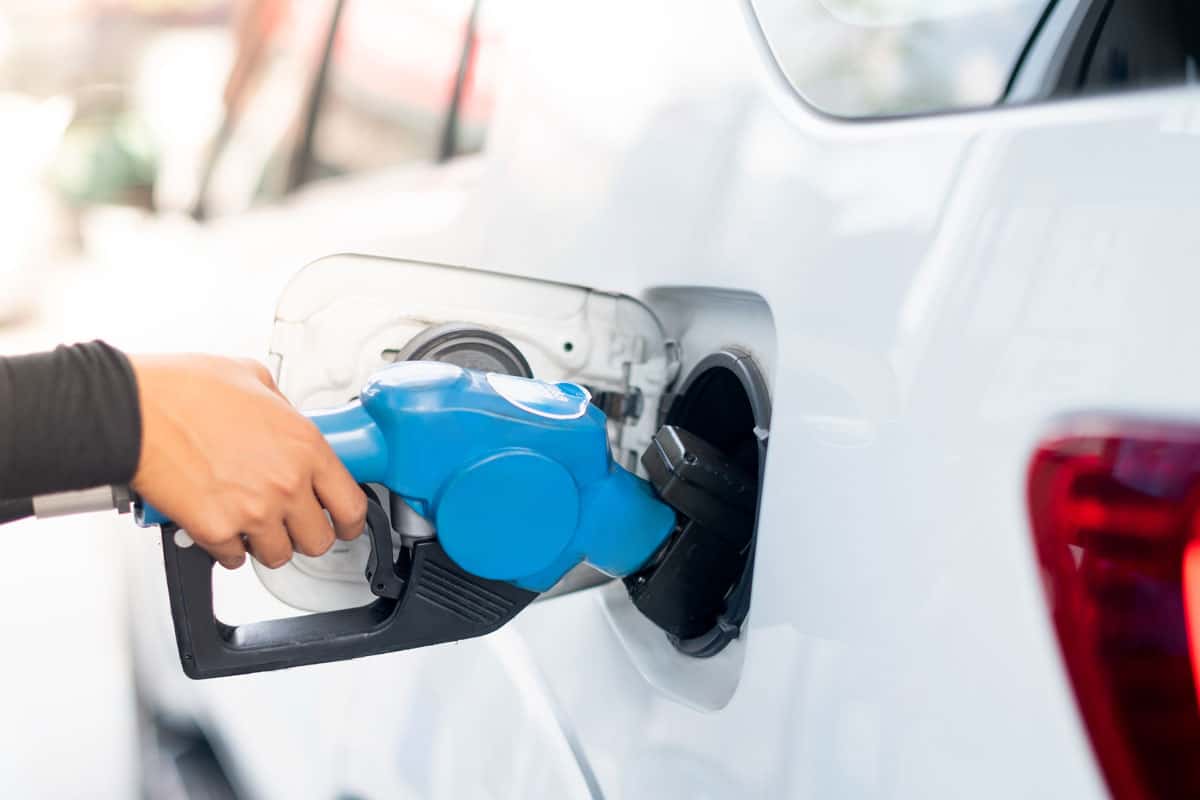
Roof racks are a great way to haul your things during a move. And while you can't always avoid moving this way, know that it does decrease your vehicle's miles per gallon.
Our vehicles are aerodynamically designed to get the least amount of wind resistance possible. The easier it will travel into the wind, the less fuel it will need to expend. Placing objects on the roof interferes significantly with this.
Objects on top of your car increase the drag by a lot. The more drag, the more fuel your engine will consume. Though you might need to use the roof rack occasionally, only use it when necessary.
Final thoughts
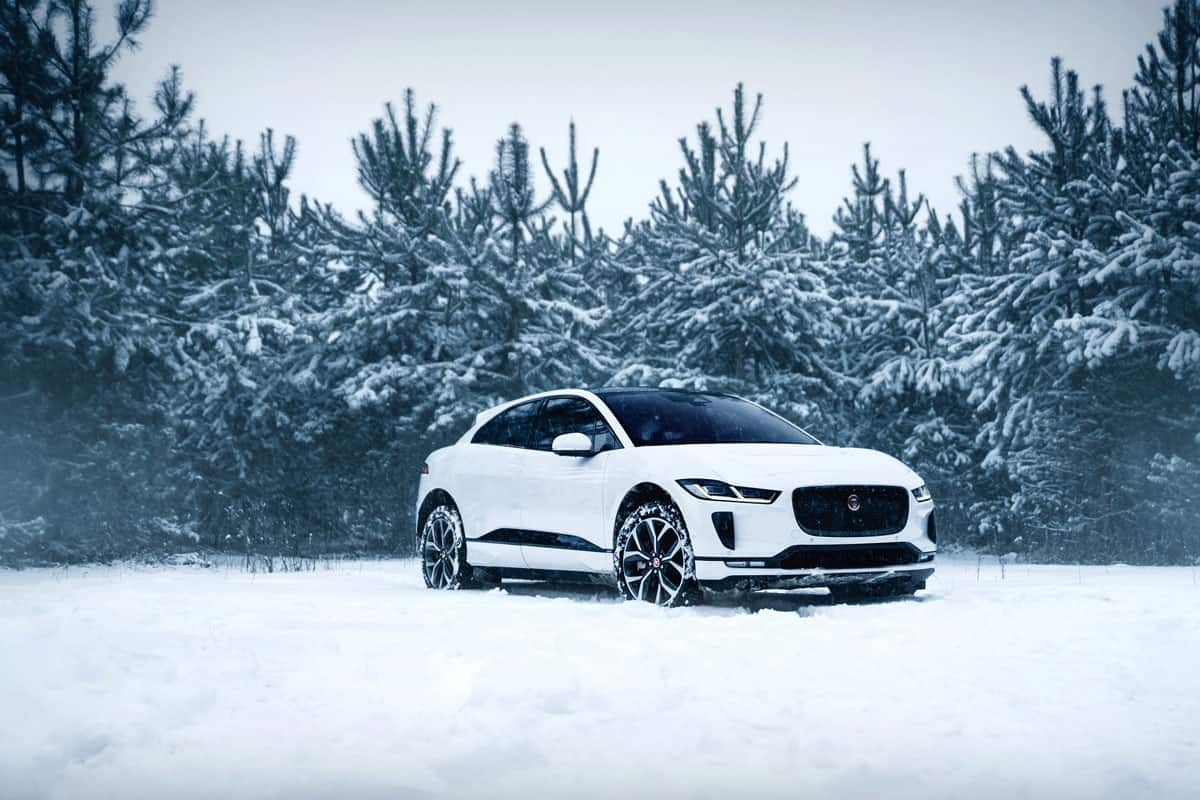
Snow mode is a feature that will not only make it better to drive in adverse conditions but will also burn less fuel when doing so. There are lots of fuel-saving tips out there, so be sure to examine each one of them and apply them to save money at the gas pump.
Explore the other driving modes your vehicle has to offer, as they can make driving a more enjoyable [and fuel-saving] experience. Drive safe!
We're glad you made it this far! Hopefully, all your questions about snow mode have been answered. For more helpful information, we suggest reading the following posts:
What Does Snow Mode Do In A Jeep Cherokee?
How To Drive A Toyota Highlander In Snow [Inc. Using The Snow Button]
What's a Good Mileage for a Used Car? [12K Miles Rule Explained]
